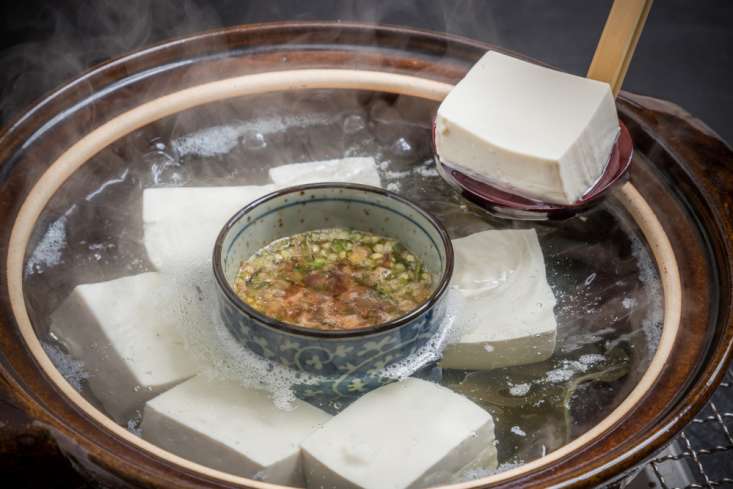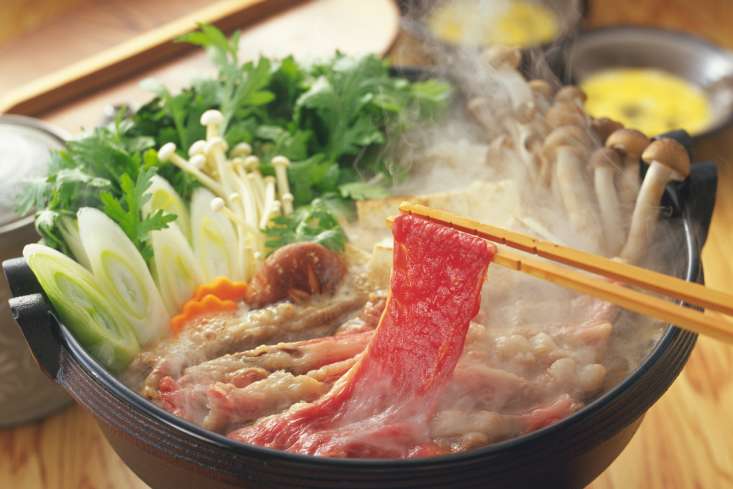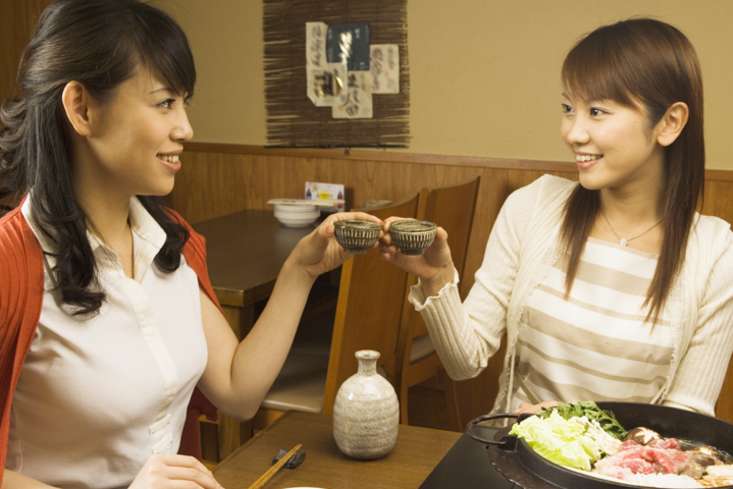
When the cold Japanese winter starts piercing right through you, there’s nothing better than a steaming hotpot to fill your belly and warm your soul! By yourself, with friends or family, at home or on the town, Japan's one-pot meals are the perfect way to enjoy the bounty of the winter season in the toasty comfort of the indoors! Hotpot meals usually consist of a big pot, often earthenware, of seasoned broth which sits on some kind of heating element like a portable stove on the dining table. Into this goes pre-sliced ingredients which are cooked at the table by diners as the meal progresses, with each diner adding what they please to the pot, then plucking it out when it's cooked.
Hotpots run the gamut in styles; from traditional to novelty (think Italian style with tomatoes and wine!), and from casual (like chicken or pork) to fancy (like lobster or crab). Meat lovers can enjoy sukiyaki – beef simmered with other ingredients in a sweet, salty base. Thinly sliced beef, pork, or fish is lightly boiled in water to create shabu shabu. For those who prefer meatless meals, yudofu is the answer!
Buri Shabu

If you try one local specialty while in the town of Ine in Kyoto prefecture, make it buri shabu, a mature buri (yellowtail) fish that swims along the Tango Peninsula every winter. This fish is prized for being fatty from head to tail, making it extraordinarily tender and rich. Buri shabu is a seasonal, regional dish that’s been a local favorite for decades. The buri is briefly boiled in kelp stock and then served with ponzu (citrus soy sauce) or sesame sauce when it’s only half-cooked. The boiling removes a little of the fat, but leaves enough to create a tantalizing combination of fresh, sweet, and buttery flavors.
Matsuba-Gani Snow Crab

In winter the restaurants around Tajima in Hyogo prefecture showcase an impressive array of seafood pulled straight from the icy Sea of Japan. Amongst all the seasonal delicacies on the menu, Matsuba-gani is the ultimate Tajima delicacy. These prized snow crabs are caught from November until March, and their sweet meat practically melts in your mouth. Although the Matsuba-gani can be prepared almost any way imaginable, the natural flavor of the crab is so cherished that most prefer to savor it simply boiled. It can also be tossed into stews and broths like sukiyaki, or thrown into porridges and grilled with dipping sauce. In its freshest state, Matsuba-gani is eaten as sashimi, a rare treat for sushi aficionados. No matter how you order it, wash it down with a local Tajima sake.
Yudofu

Yudofu, or boiled tofu was originally eaten by Buddhist priests in Kyoto. Unable to eat meat or fish for religious reasons, this protein-rich, versatile ingredient was a precious source of nourishment for them. The tradition of eating yudofu lives on in Kyoto today, with many traditional restaurants featuring the regional on their menus. Beyond Kyoto, the the light taste and smooth texture of yudofu has made it a popular wintertime hotpot ingredient throughout present-day Japan. The hand-made tofu is cooked in a lightly seasoned soup, then taken out before it loses its shape, and dipped it in a relish. Some say that the best way to enjoy yudofu is to scoop it out of the pan as soon as it starts floating.
and Sukiyaki

Sukiyaki consists of thinly sliced beef simmered in a hot pot alongside vegetables, noodles, and other ingredients. Typically, the steaming-hot morsels are pulled from the pot and dipped in a small bowl of beaten eggs before eating.
…and some sake to go with it!
A sip of sake, a bite of perfectly cooked meat and veggies from the hotpot…Truly a match made in heaven!

Japanese sake, called nihonshu in Japan, begins its production each October. Sake is made from rice which has been polished to varying degrees. Sake grades and flavor profiles differ depending on the polish, with the more polished grains generally producing a more refined flavor. This is because outer portions of the rice grain, which surround an almost pure starch, contain fats and proteins which can cause "off" flavors. The most expensive sake have their rice grains polished to at least half of the original grain size! The two main categories of sake are junmai (pure rice) which is made from only rice, water, kobo (yeast), and koji (rice malt); and honjozo, which includes a small amount of distilled alcohol added at the end of fermentation to stabilize the sake and enhance its fragrance. You may have seen the word junmai on the label of some sake – if the name doesn't include the word junmai, then it is usually honjozo.

Ginjo refers to the a type of brewing process, and is also a naming term used for some sake. Sake undergoing this process is slowly fermented at low temperatures. Ginjo-brewed junmai sake has a fuller body and more pronounced rice aroma than honjozo sake brewed this way, which tends to be crisper and less floral.

Sake can be served in a wide range of temperatures. There are some fine sakes that benefit from being served gently warmed. Depending on the sake, serving it at a temperature that is too low can inhibit the true essence of the drink. And just as with wine, finding a sake that you love is one of the great rewards of a food and drink lover's life!



















































